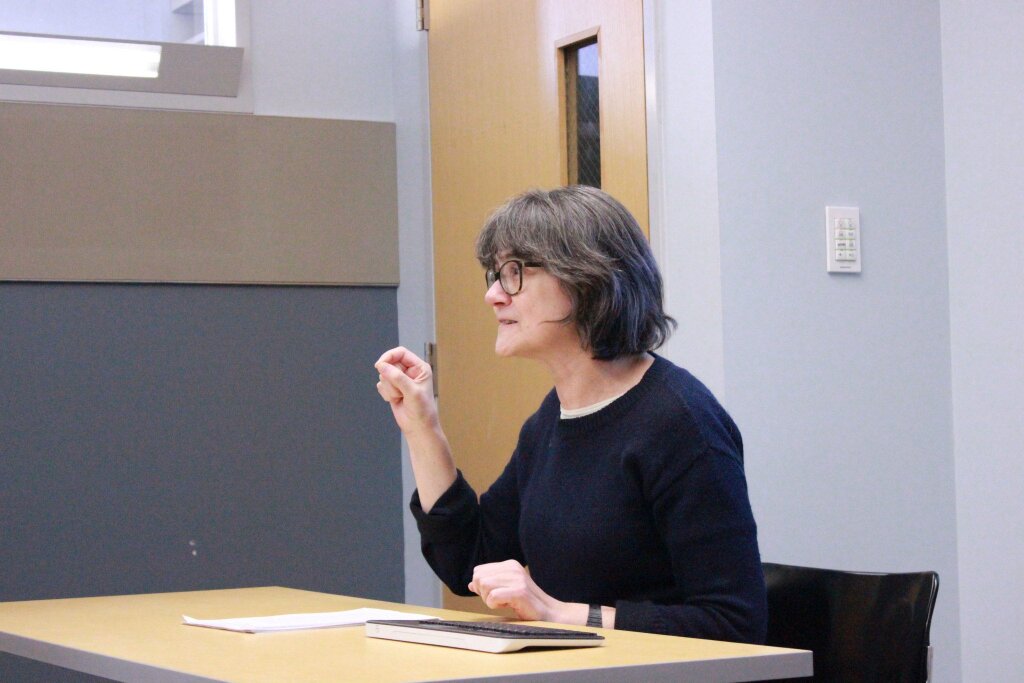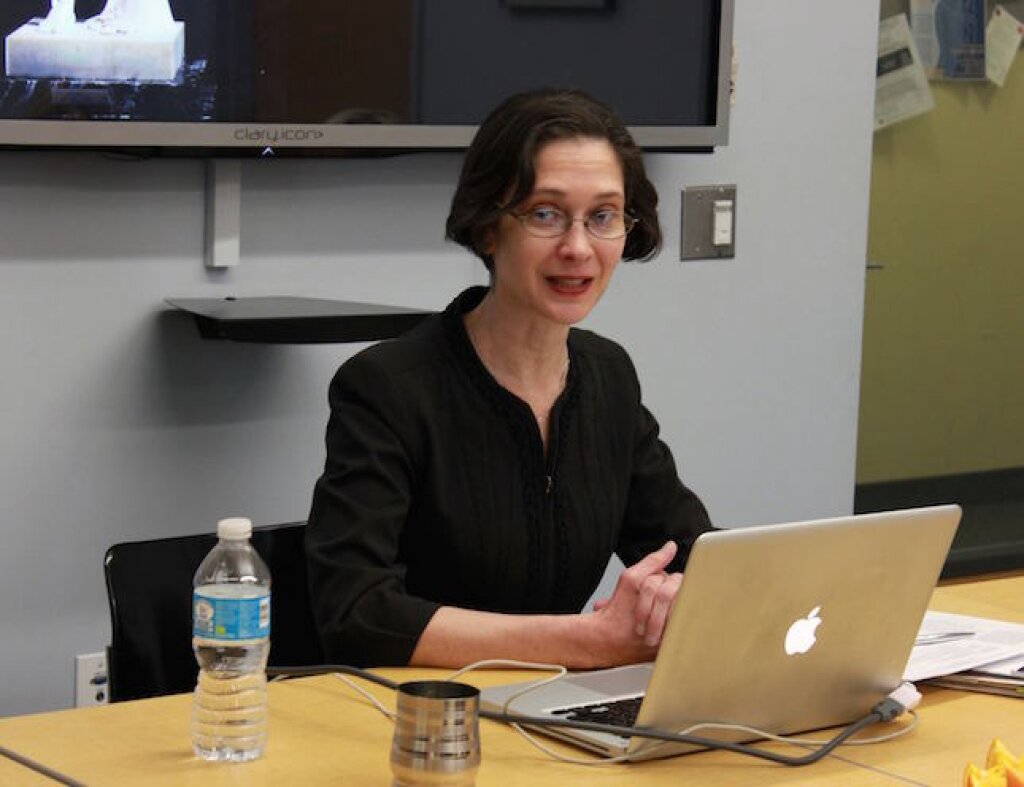Watch the video of the event here
On March 13, 2015, the NYU Jordan Center for the Advanced Study of Russia welcomed Irina Sandomirskaja, Professor of Cultural Studies at Södertörn University, to present a paper entitled “Originating in Return: Russian Past, Soviet Legacy, and Critical Cultural Heritage Theory.” After a brief introduction by Professor Anne Lounsbery, chair of the NYU department of Russian and Slavic Studies, Sandomirskaja stated that in the past she has worked extensively on the relationship between image and word; now she has set off to study the object. In particular, she focused her study on the Russian Orthodox icon and its re-appropriation in Soviet cultural politics.
The religious icon, Sandomirskaja explained, became central to the Soviet invention and conservation of Russian heritage. In the Soviet Union, the historical past was always an object of manipulation and stylization, and various historical periods were re-appropriated to serve the Soviet propaganda machine. This nihilism towards the real past, Sandomirskaja claimed, was haunted by a historic narcissism – a yearning to build up symbolic monuments that would embody a dreamlike, ideal past.
The religious icon was almost obliterated with the destruction of churches and religious cultural objects during the onset of the Russian Bolshevik revolution. However, their complete destruction was prevented by historians who pointed out to the Bolsheviks the icon’s value as a cultural object in a museum or on the market. Igor Grabar was a main actor and “an outstanding case of agency” in the process of the icon’s cultural, political, and commercial appropriation. He justified the profanation of the relics and their display in museums by stating that it is “better saved than non-existent.” While the West accused Grabar’’s rehabilitation rhetoric of covering up the real desire to profit, Sandomirskaja claims that there was a real redemptive intention in Grabar’s logic: while the icon was removed from its natural environment, it was being saved. Sandomirskaja drew a parallel between this rhetoric and that used to talk about the fate of disabled children in the Soviet Union: children who end up in orphanages should have no right to complain about the conditions around them because at least they are being saved.
Drawing on Theodor Adorno’s and Walter Benjamin’s writings on phantasmagorias and the processes of commodification, Sandomirskaja discussed how the Russian icon was eventually turned into a market commodity and a historical fetish by the Bolsheviks between 1920 and 1940. Early on, it was transformed from a holy relic into a peasant handicraft. Later it became an object of high art to be displayed in the most prestigious museums all over the world. It also metamorphosed from a symbol of counterrevolution into one of Soviet propaganda. Lastly, it became representative of the Soviet symbolic order.
The icon’s new presence on the market concealed its true historical value and genealogy. Its new genealogy was now determined by the logic of re-appropriation and re-historicization. The Bolsheviks, however, were not the first to exploit and to re-appropriate the Russian icon, Sandomirskaja explained. Turning holy relics into art objects was a common practice in previous historical periods of modernity.
Sandomirskaja suggested that the ideas of Sigmund Freud are useful when considering the icon’s transformation into Soviet cultural heritage. According to Freud, the urge to preserve the past establishes a fantasy that compensates for the horror of the void felt in the present. But the objects of preservation themselves become a reminder of the failure of the preservation project. Sandomirskaja brought up the theory of prostheses to illustrate her point. A prosthesis is a permanent reminder of an amputation, she said. On the one hand, it has an enabling capacity; on the other – a prosthesis also incapacitates because it monumentalizes the initial loss. In art and architecture, the prosthetic function is the re-educated past, “instead of the amputated past that is deader than dead.” By monumentalizing an event or a cultural object, Sandomirskaja stated, one does not celebrate that event or object itself, but rather the present day’s ambition to include the unrecoverable past in the present.
The urge to conserve is an international phenomenon, which is a most faithful representation of modernity, Sandomirskaja believes. However, she also added the fixation on the origin in the process of preservation is particularly Soviet. It is imagined as something absolutely essential to the object that needs to be resurrected, but is at the same time irreconcilably lost.
The discussion following the presentation touched on connections between the icon, the avant-garde and socialist realism; the possible parallels between religious propaganda and Bolshevik propaganda; and myth formations of the Northern Renaissance in Russia. The church and religion, Sandomirskaja believes, might be the entryway of catastrophe into the “stupidly smiling,” positivistic rhetoric of socialist realism.



